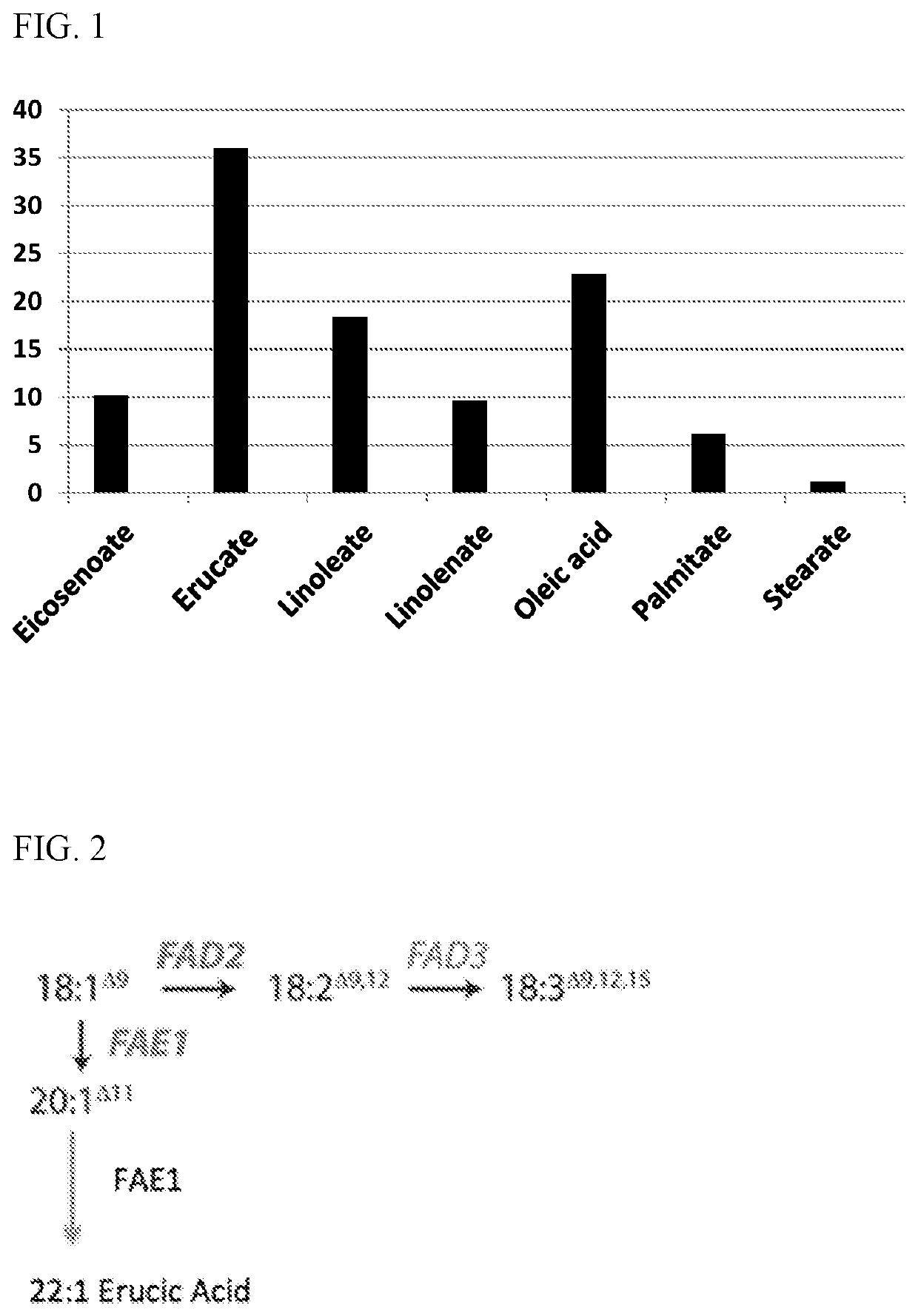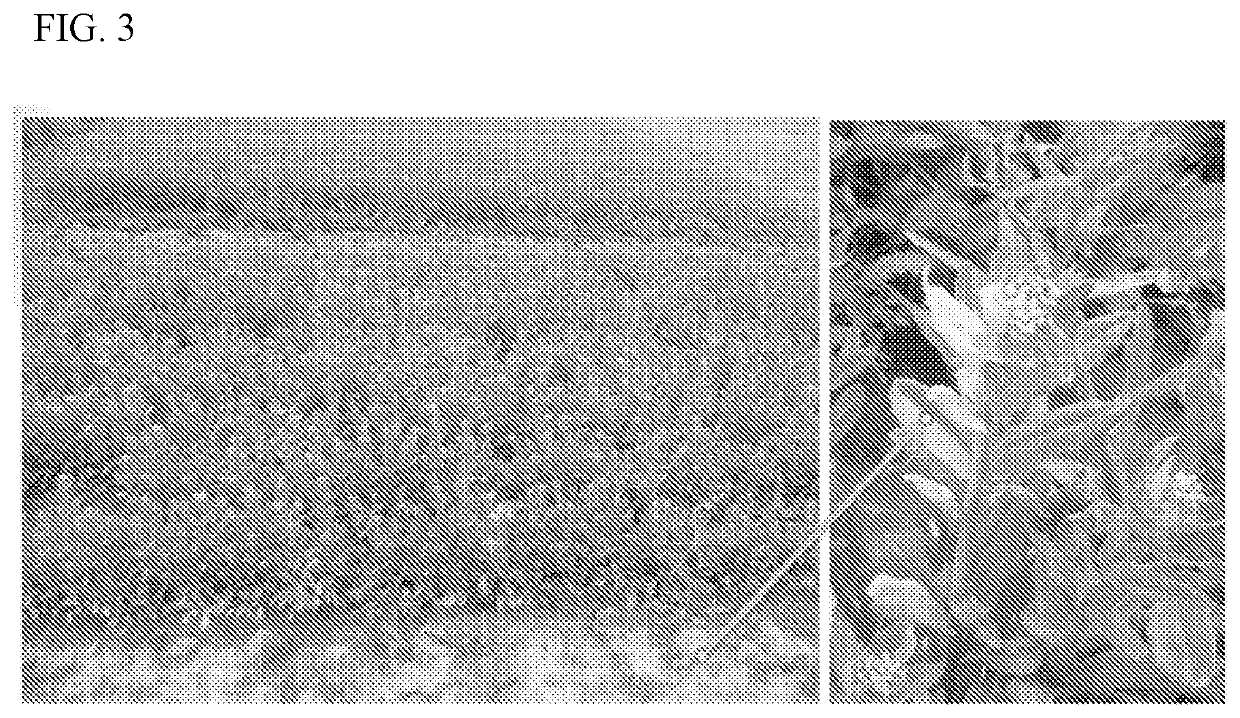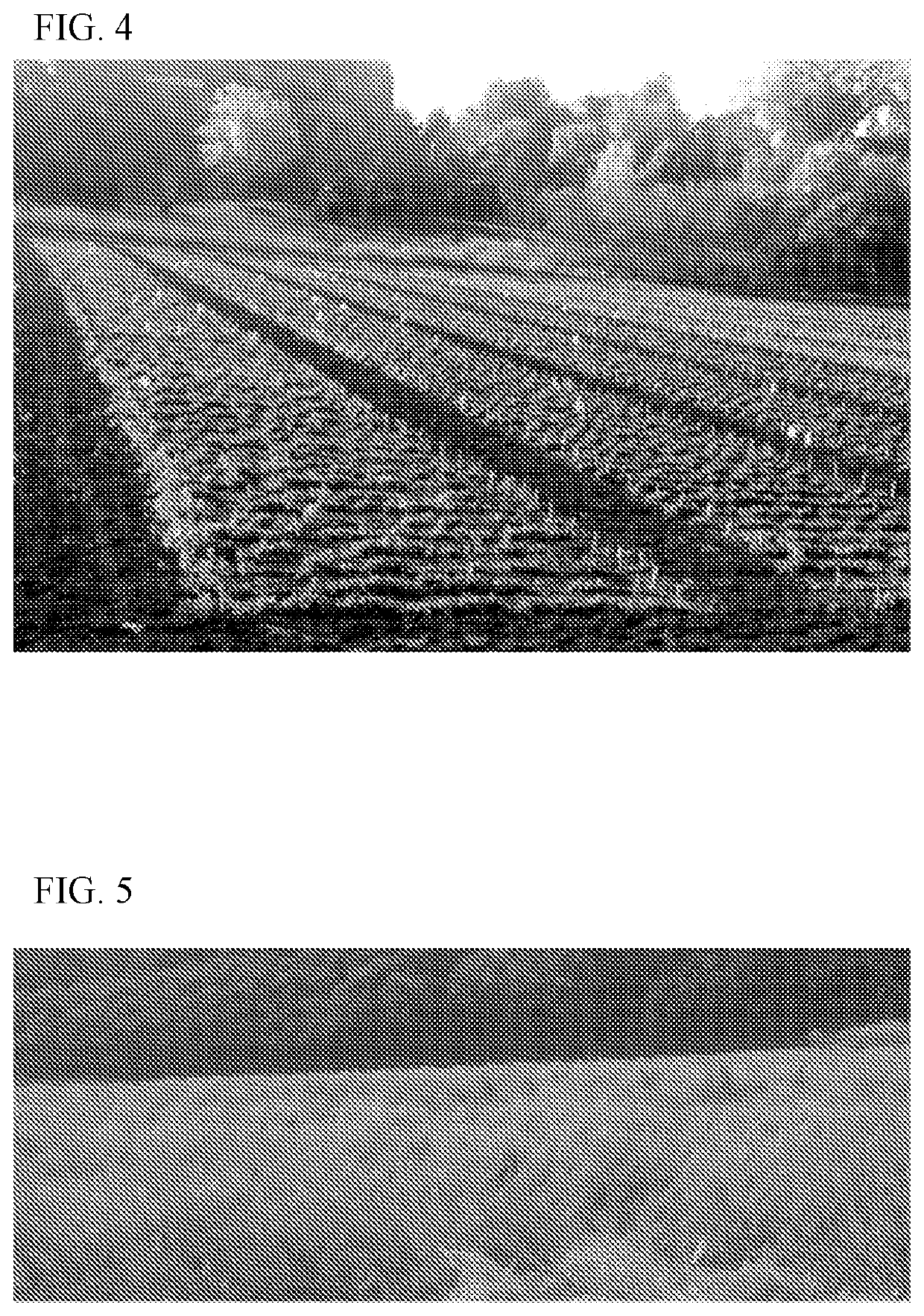Plants having increased oil quality
a technology of plant oil and quality, applied in the direction of enzymology, biochemistry apparatus and processes, transferases, etc., can solve the problems of unfit human consumption of oils, contamination and toxicity of canola oil,
- Summary
- Abstract
- Description
- Claims
- Application Information
AI Technical Summary
Benefits of technology
Problems solved by technology
Method used
Image
Examples
example 1
Creation of Low Erucic Acid Pennycress by EMS Mutagenesis
[0045]Seeds derived from pennycress accession MN106 were collected as described elsewhere (see, e.g., Dorn et al., 2013 The Plant Journal, 75:1028-38), and were treated with 180 ml 0.2% ethyl methanesulfonate (EMS) in a chemical flow hood. The solution and seeds were kept mixed on a rotating platform for 14 hours at room temperature. The seeds were thereafter extensively rinsed with distilled water to remove all traces of the EMS. The seeds were then dried for 24 hours on filter paper in a chemical flow hood. These seeds were considered to be the progenitors of the M1 generation of plants.
Growing of the M1 Generation
[0046]The mutagenized seeds were sowed into small field plots. These plots were allowed to grow over winter. The following spring abundant albino sectors were noted on the flowering plants (FIG. 3). Such sectoring is the hallmark of a successful mutagenesis.
Collection and Growing of M2 Seeds
[0047]Seeds w...
example 2
Creation of Low Erucic Acid Pennycress by Direct Targeting of FAE1 with CRISPR / Cas9
[0054]Construction of the Thlaspi arvense (Pennycress) FAE1 Gene-Specific CRISPR-Cas9 Vector.
[0055]The constructs and cloning procedures used for generation of the Thlaspi arvense (pennycress) FAE1-specific CRISPR-Cas9 construct were as described elsewhere (see, e.g., Fauser et al., 2014 The Plant Journal 79:348-359). The plant selectable marker in the pDe-Cas9 binary vector (formerly basta) was swapped for hygromycin resistance (the Hygromycin phosphotransferase (hpt) gene) to create a pDe-Cas9_Hyg vector.
[0056]The following oligos were annealed to create a 20-mer protospacer specific to the pennycress FAE1 sequence:
PennyFAE1_CRISPR_FWD:(SEQ ID NO: 16)5′ ATTGTGGCTCTCTACATCGTAACC 3′;andPennyFAE1_CRISPR_REV:(SEQ ID NO:17)5′ AAACGGTTACGATGTAGAGAGCCA 3′.
Vector Transformation into Agrobacterium tumefaciens Strain GV3101.
[0057]The pDe-Cas9_Hyg vector containing the pennycress FAE1 sequence-specific protosp...
PUM
| Property | Measurement | Unit |
|---|---|---|
| humidity | aaaaa | aaaaa |
| pH | aaaaa | aaaaa |
| total volume | aaaaa | aaaaa |
Abstract
Description
Claims
Application Information
 Login to View More
Login to View More - R&D
- Intellectual Property
- Life Sciences
- Materials
- Tech Scout
- Unparalleled Data Quality
- Higher Quality Content
- 60% Fewer Hallucinations
Browse by: Latest US Patents, China's latest patents, Technical Efficacy Thesaurus, Application Domain, Technology Topic, Popular Technical Reports.
© 2025 PatSnap. All rights reserved.Legal|Privacy policy|Modern Slavery Act Transparency Statement|Sitemap|About US| Contact US: help@patsnap.com



